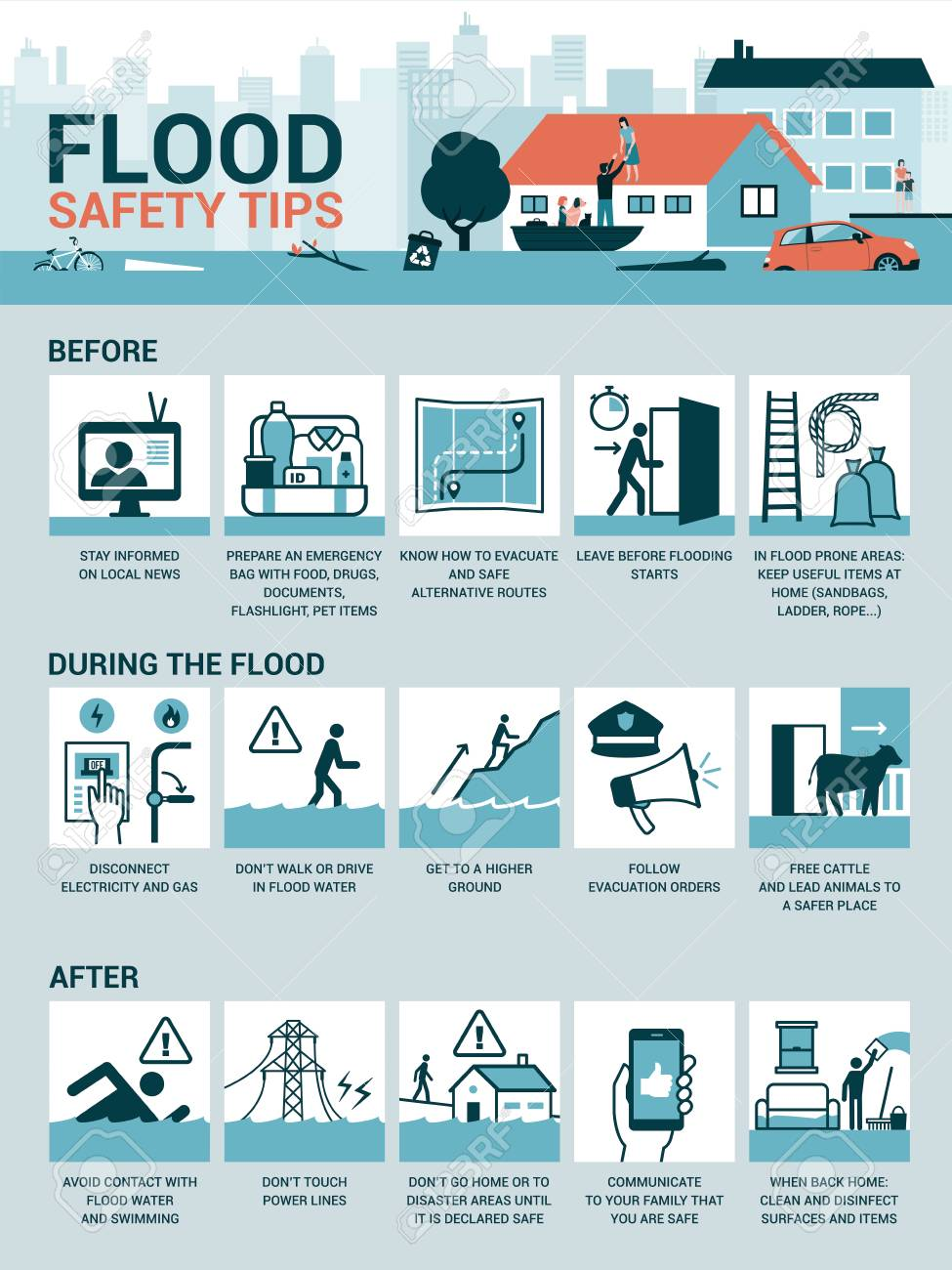Flash Flood Emergency Response: Protecting Yourself And Your Family

Table of Contents
Understanding Flash Flood Risks
Flash floods are rapid, sudden rises in water levels, typically in normally dry areas. Their speed and intensity make them incredibly dangerous. Unlike slow-rising river floods, flash floods can inundate communities within minutes, leaving little time for escape. Several factors contribute to the risk:
-
High-Risk Areas: Certain locations are inherently more vulnerable to flash floods. These include areas with:
- Steep slopes, which accelerate water runoff.
- Dry creek beds or washes, which can quickly fill with rushing water.
- Recent wildfire burn scars, where vegetation loss prevents soil absorption.
- Proximity to rivers and streams, especially those prone to overflowing.
-
Weather Patterns: Flash floods are primarily triggered by intense, short-duration rainfall events, often associated with:
- Heavy thunderstorms and cloudbursts.
- Monsoonal weather systems.
- Dam or levee failures.
- Rapid snowmelt in mountainous regions.
-
Staying Informed: Monitoring weather forecasts is paramount. Reliable sources include:
- The National Weather Service (weather.gov): Check their alerts and warnings for your specific location.
- Local news channels and weather apps: These often provide real-time updates and localized information.
Building Your Flash Flood Emergency Plan
Proactive planning is your best defense against flash floods. A well-defined emergency plan ensures your family's safety and minimizes disruption.
-
Family Communication Plan: Establish clear communication protocols:
- Meeting Place: Designate a safe, easily accessible meeting location outside your home.
- Out-of-State Contact: Choose a contact person outside your immediate area to serve as a central point of communication.
- Evacuation Routes: Identify multiple escape routes from your home and neighborhood, considering potential road closures.
-
Go-Bag Essentials: Prepare a readily accessible emergency kit containing:
- Water (at least one gallon per person per day), non-perishable food, a well-stocked first-aid kit, essential medications, flashlights, extra batteries.
- Copies of important documents (identification, insurance information, medical records).
- Emergency blanket, a change of clothes, and sturdy footwear.
-
Evacuation Routes and Shelters: Know the safest evacuation routes and locate nearby shelters in advance. Your local emergency management agency can provide this information.
-
Flood Insurance: Consider purchasing flood insurance, even if you're not in a designated high-risk zone. Many homeowners' policies do not cover flood damage.
Responding to a Flash Flood Warning
Understanding the difference between a watch and a warning is crucial:
-
Watch: Conditions are favorable for flash flooding to develop. Stay alert and monitor weather updates.
-
Warning: A flash flood is imminent or occurring. Take immediate action.
Immediate Actions Upon Receiving a Warning:
- Evacuate Immediately: Move to higher ground as quickly and safely as possible. Do not delay.
- Avoid Floodwaters: Never drive or walk through floodwaters. The water's depth and current can be deceivingly strong.
- Unplug Appliances: Disconnect electrical appliances to prevent electrocution.
- Move Valuables: Relocate valuable items to upper floors or other safe, elevated locations.
Safety Tips During a Flash Flood:
- Stay Away from Floodwaters: Floodwaters can contain debris, chemicals, and disease-causing organisms.
- Avoid Driving: Even seemingly shallow water can sweep away vehicles.
- Beware of Downed Power Lines: Stay far away from downed power lines – they are extremely dangerous.
- Monitor Emergency Broadcasts: Listen to local news and emergency alerts for updates and instructions.
Post-Flash Flood Actions
Once the immediate danger has passed, take these steps:
- Assess Damage: Carefully inspect your property for damage, taking photos for insurance purposes.
- Contact Insurance: Notify your insurance company immediately to begin the claims process.
- Seek Medical Attention: Seek medical help if you or anyone in your family has been injured.
- Report Damage: Report damage to your local authorities to aid in the overall recovery effort.
- Beware of Hazards: Be cautious of contaminated water sources and potential structural damage.
- Follow Official Guidance: Follow the instructions provided by emergency officials for cleanup and recovery.
Conclusion
Effective flash flood emergency response relies heavily on preparation, immediate action, and post-flood recovery. By developing a comprehensive plan that includes a family communication strategy, a well-stocked emergency kit, identified safe evacuation routes, and an understanding of the risks in your area, you can significantly minimize the impact of a flash flood. Don't wait for a flash flood emergency; take action today to create a comprehensive flash flood emergency response plan for your family. Learn more about flood safety and resources available in your area by visiting the National Weather Service website (weather.gov) and your local emergency management agency.

Featured Posts
-
 Is An Escape To The Country Right For You A Realistic Look
May 25, 2025
Is An Escape To The Country Right For You A Realistic Look
May 25, 2025 -
 Geriden Gelen Dev Atletico Madrid In Yuekselisi
May 25, 2025
Geriden Gelen Dev Atletico Madrid In Yuekselisi
May 25, 2025 -
 Everything You Need Housing Finance Kids Activities At The Iam Expat Fair
May 25, 2025
Everything You Need Housing Finance Kids Activities At The Iam Expat Fair
May 25, 2025 -
 Matt Maltese Intimacy Growth And His New Album Her In Deep
May 25, 2025
Matt Maltese Intimacy Growth And His New Album Her In Deep
May 25, 2025 -
 Jacques Y Gabriella De Monaco Imagenes De Su Primera Comunion
May 25, 2025
Jacques Y Gabriella De Monaco Imagenes De Su Primera Comunion
May 25, 2025
Latest Posts
-
 Memorial Service Held Sunday For Hells Angels Member Craig Mc Ilquham
May 25, 2025
Memorial Service Held Sunday For Hells Angels Member Craig Mc Ilquham
May 25, 2025 -
 Mandarin Killings Reveal Hells Angels Evolving Business Strategies
May 25, 2025
Mandarin Killings Reveal Hells Angels Evolving Business Strategies
May 25, 2025 -
 Hells Angels New Business Model Insights From Mandarin Killings
May 25, 2025
Hells Angels New Business Model Insights From Mandarin Killings
May 25, 2025 -
 Italian Open 2024 Alcaraz And Sabalenkas Opening Victories
May 25, 2025
Italian Open 2024 Alcaraz And Sabalenkas Opening Victories
May 25, 2025 -
 Mandarin Killing Highlights Hells Angels New Business Model
May 25, 2025
Mandarin Killing Highlights Hells Angels New Business Model
May 25, 2025
